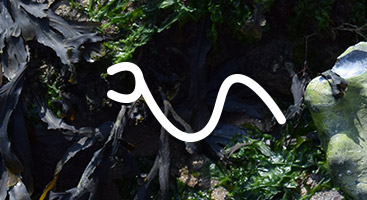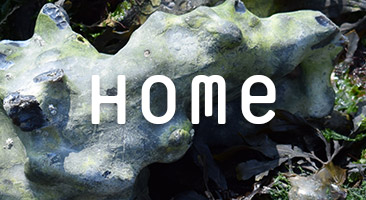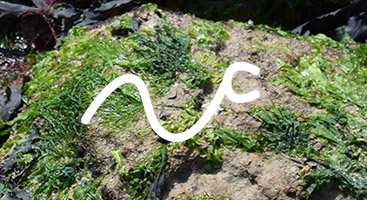Oncology in J.H. Prynne's Word Order
The macro-context is either omitted or unmastered, but the micro-contexts remain worth looking at in their own terms. (Larkin, 103)
I’d like to engage with the micro-contexts of a section of Jeremy Prynne’s Word Order (1). In this I am deeply indebted to Peter Larkin’s writing on Prynne (2). The section in its entirety reads:
Cut and blow dry as
we shall have snow
art so unkind
Pinkepinke invincible
who has so much
a rush of wind
invasive, ground cover
fire down below
vinca alkaloids
never in the world
‘Cut and blow dry’ suggests surgery, the first effective treatment for cancer, the first treatment option to come to the newly diagnosed patient’s mind to remove the tumor. The second line draws the reader into the poem by replacing the second person imperative with the first person plural, thereby incorporating the reader and narrator of the poem into the unfolding drama. The word ‘shall’ contains a suggestion of ‘all’, which would rewrite the line as ‘we all have’, making the experience one that is shared between the speaker and the reader. ‘Snow’ as tumour appearing white in the imaging study, tumours appearing as patches of snow on the ground. In the case of oncology, we might want to specify that the body is a battle ground; the tumour emerges from the body and is destroying the body as the brain of the body is trying to destroy the tumour; the body at war with itself. ‘Snow art’, we can read as tumor art or the ways in which cancer writes on the body and rewrites, therefore making the body unfamiliar to the self. With this foreign body, what is the meaning of kindness? Prynne’s poem asks, is the ‘art so unkind’ as the narrative of chemotherapy as poison leads us to believe?
The second stanza answers, that it is the economy that is so unkind. ‘Pinkepinke’, German slang for ‘money’, reminds us that cancer is its own economy; see the profits for pharmaceutical companies and funds raised to increase awareness. See the pink on pink of Breast Cancer Awareness Month; when everyone who is already aware is worried over and over again with the highly visible pink. The pink invincible is just what the campaign is advertising. Breast cancer treated in its early stages is readily curable; however, the patient with advanced breast cancer can be cared for, never cured. Who is invincible then, the cancer or the patient? ‘Invincible’ is echoed with ‘invasive’ evoking again the cancer through the body at war with itself metaphor, and the violence associated with oncology, without ever explicitly writing the word violence. The consonance of the V’s invade the sound-landscape of this poem, beginning with ‘invincible’, then repeating throughout the first, second, third, and fourth stanzas with the words ‘have’, ‘invasive’, ‘invincible’, ‘cover’, ‘vinca’, and ‘never’. The V’s have spread all over the body of the poem as so much unsustainable growth, as so high a tumor burden, as one ‘who has so much’. When ‘a rush of wind’ carries the cancer as snow further afield of the surgical field that the body has become.
This ‘invasive, ground cover’ recasts cancer in ecological terms. Cancer as an invasive species which upsets the balance of a system by outcompeting the native species for resources; the poem translates from one discourse to another. This elegant ecological logic is extended in the following line, ‘fire down below’ which indicates the subterranean, the metabolism below the topsoil. A high metabolic rate, seen as the heat of fire, is taken as evidence of growth of root or rhizome; the growth of this fire brings destruction. This is the unsustainable growth of the tumour and spread of the cancer throughout the body. This latter process, metastasis, is defined as the tumour invading other organ systems. Enter the ‘vinca alkaloids’, the name of a series of closely-related natural and semisynthetic chemotherapy medications, derived from the Madagascar periwinkle. Here the treatment plan of the poem moves from surgery to chemical therapy; here is the volta of the cancer treatment. The diction of the poem turns here towards the specific, technical, and scientific. Here, in the penultimate line, the ecological metaphor has been transformed into a metonym; ecology is associated with the plant products that inspire new chemotherapy. Vinca plants are considered an invasive species in North America, making their alkaloid products’ usefulness in killing invasive cancer cells ironic. There is a long pause of multiple blank lines, where the poem is growing in length, silently. The final line ‘never in the world’ leaves the reader with a pessimistic prediction about the future. The juxtaposition of the similar sounds with the opposing meanings of the words creates a paradoxical expression about the future of cancer medicine.
What distinguishes this poem from almost all the other creative writing on cancer – the poetry, the novels, the nonfiction – is that it isn’t about a person. The poem is neither sentimental or relational; there is no human character present, only a body, a doctor, and a disease are implied. The subject of this poem is medicine, the practice of oncology: the poem is objective in the scientific sense, a rigorous investigation of cancer medicine. Prynne presents the reader with a rigorous micro-context within oncology by focusing on surgical and medical oncology. This mico-context is the science of medicine, rather than the human art of medicine. Here is a micro-narrative that functions as a lyric and a prayer for any patient or carer who knows which vinca alkaloid was pushed into their veins: vinblastine, vincristine, or vinorelbine. It is as general as a prayer shared by oncologist, nurse, patient, and carer.
1. J. H. Prynne, Collected Poems (Bloodaxe, 2015 edition, p.376)
2. Peter Larkin, ‘If Flowers of Language Will (Have) Been a Language of Flowers: Trials of Florescence in the Poems of J.H. Prynne’ in For The Future: Poems and Essays in Honor of J.H. Prynne on the Occasion of his 80th Birthday (Shearsman, 2016).



